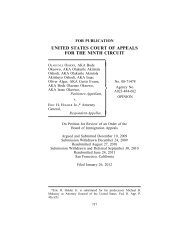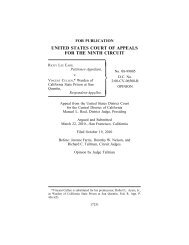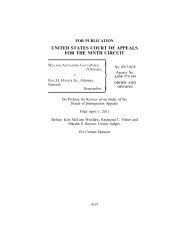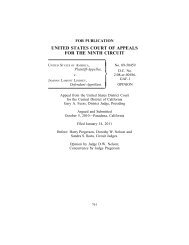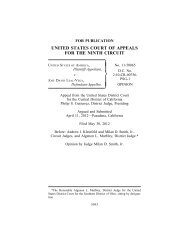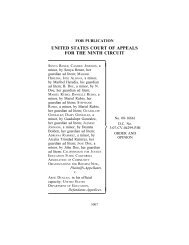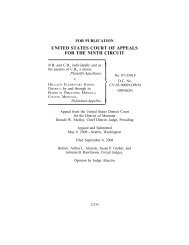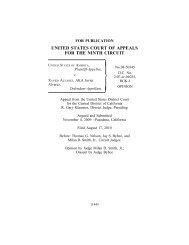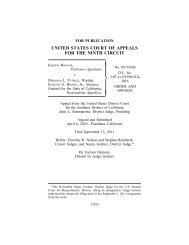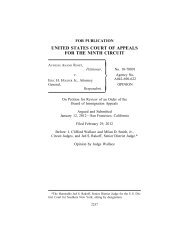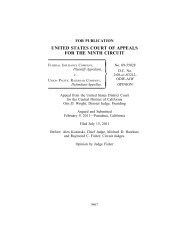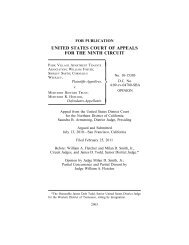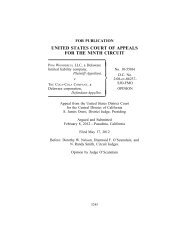UNITED STATES COURT OF APPEALS FOR THE NINTH CIRCUIT
UNITED STATES COURT OF APPEALS FOR THE NINTH CIRCUIT
UNITED STATES COURT OF APPEALS FOR THE NINTH CIRCUIT
Create successful ePaper yourself
Turn your PDF publications into a flip-book with our unique Google optimized e-Paper software.
9762 PAYNE v. PENINSULA SCHOOL DISTRICT<br />
sion designed to facilitate the coexistence of the IDEA with<br />
other forms of relief into one designed to preempt all cases<br />
involving the mistreatment of disabled students by a school.<br />
We do not think that the IDEA’s exhaustion requirement was<br />
intended to penalize disabled students for their disability. This<br />
is not what § 1415(l) says, and we think it is not what Congress<br />
intended.<br />
IV<br />
A<br />
[10] We now apply our approach to Payne’s case and supply<br />
instructions for the district court. Payne alleged several<br />
§ 1983 claims, as well as Washington state tort actions for<br />
negligence and outrage. The district court did not specifically<br />
address each claim and explain why exhaustion was required<br />
for each. Relying on Robb, it simply stated that “because<br />
plaintiffs’ injuries could be remedie[d] to some degree by the<br />
IDEA’s administrative procedures and remedies, the plaintiffs<br />
must exhaust those administrative remedies before filing<br />
suit.” However, in light of the new standards announced in<br />
this decision, the district court on remand should permit<br />
Payne to amend her complaint in order to flesh out her specific<br />
claims and enable the court to determine which claims<br />
require IDEA exhaustion and which do not.<br />
[11] The district court should then provide the defendants<br />
with an opportunity to seek dismissal of some or all of<br />
Payne’s claims on the ground that they require administrative<br />
exhaustion. The district court need not wait to consider the<br />
applicability of the exhaustion requirement until the record is<br />
complete and a motion for summary judgment has been filed.<br />
We have previously held that a non-jurisdictional exhaustion<br />
requirement can be cited defensively “as a matter in abatement,<br />
. . . subject to an unenumerated Rule 12(b) motion<br />
rather than a motion for summary judgment.” Wyatt v. Terhune,<br />
315 F.3d 1108, 1119 (9th Cir. 2003) (collecting cases).



